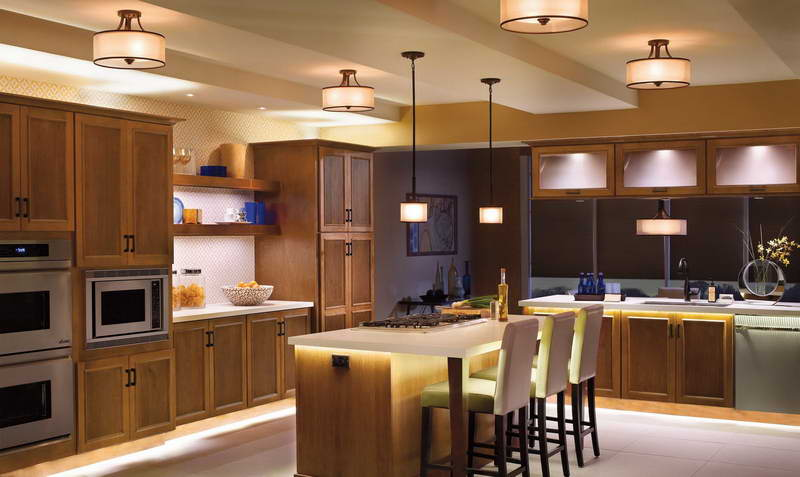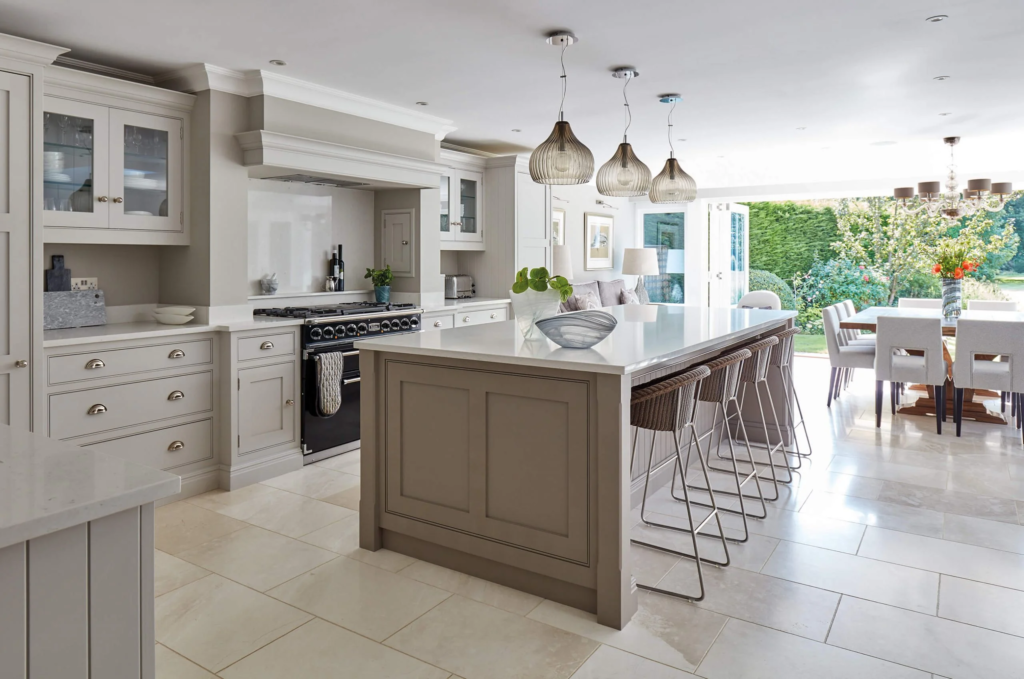A well-lit kitchen is not only functional but also enhances its ambiance and style. To illuminate your kitchen effectively, it’s essential to understand the different lighting types and how to use them to create a well-balanced and inviting space. This guide will walk you through various kitchen lighting options and their respective purposes.
1. Task Lighting
Purpose: Task lighting is designed to provide focused, glare-free illumination for specific kitchen activities, such as food preparation, cooking, and reading recipes.
Types of Task Lighting:
- Under-Cabinet Lighting: Mounted beneath upper cabinets to illuminate countertops.
- Pendant Lights: Hang above kitchen islands or dining areas for directed light.
- Recessed Lights: Installed in the ceiling to provide even light distribution.
2. Ambient Lighting
Purpose: Ambient lighting creates overall illumination, making the kitchen feel welcoming and comfortable.
Types of Ambient Lighting:
- Ceiling Fixtures: Including chandeliers, flush-mount lights, or semi-flush-mount lights.
- Wall Sconces: Installed on walls to add a soft, diffused glow.
- Track Lighting: Adjustable fixtures mounted on a track for versatile lighting placement.
3. Accent Lighting
Purpose: Accent lighting highlights specific kitchen features, such as artwork, decorative pieces, or architectural details.
Types of Accent Lighting:
- Cabinet Lighting: Installed inside glass-front cabinets to showcase dishware.
- Toe Kick Lighting: Placed at the base of cabinets to create a dramatic effect.
- Art Lights: Aimed at artwork or wall decor for emphasis.
4. Decorative Lighting

Purpose: Decorative lighting adds visual interest and serves as a focal point in the kitchen’s design.
Types of Decorative Lighting:
- Chandeliers: Provide an elegant and decorative lighting solution.
- Pendant Lights: Come in various styles and shapes to complement the kitchen’s aesthetics.
- Statement Fixtures: Unique and artistic fixtures that become a design centerpiece.
5. Natural Lighting
Purpose: Natural lighting from windows and skylights can enhance the kitchen’s beauty and energy efficiency.
Types of Natural Lighting:
- Windows: Position strategically to maximize daylight while maintaining privacy.
- Skylights: Install overhead for natural light throughout the day.
- Glass Doors: Allow sunlight to flood in and connect indoor and outdoor spaces.
6. Smart Lighting

Purpose: Smart lighting allows you to control and customize your kitchen’s lighting remotely, optimizing energy efficiency and convenience.
Features of Smart Lighting:
- Dimming: Adjust light intensity to suit different activities and moods.
- Color Temperature Control: Change the color of the light from warm to cool.
- Voice and App Control: Control lights using voice commands or smartphone apps.
- Scheduled Lighting: Set timers and schedules to automate lighting.
7. Layered Lighting
Purpose: Layered lighting combines multiple lighting types to create a well-balanced and versatile lighting scheme in the kitchen.
Tips for Layered Lighting:
- Combine ambient, task, and accent lighting for a multifunctional kitchen.
- Use dimmers to adjust light levels and create different atmospheres.
- Consider the kitchen’s layout and activities when placing fixtures.
In conclusion, the key to a beautifully illuminated kitchen is to carefully plan and layer different types of lighting. By combining task, ambient, accent, and decorative lighting, along with natural and smart lighting options, you can create a kitchen that is not only well-lit and functional but also stylish and inviting. Tailor your lighting choices to suit your kitchen’s unique design and the needs of your household for a truly illuminated culinary space
FAQ
How do I determine the appropriate wattage for my kitchen lighting fixtures?
The wattage you need depends on the size of your kitchen and the specific lighting fixture. As a general guideline, aim for about 20-30 lumens per square foot. For example, a 100-square-foot kitchen may require 2,000-3,000 lumens. However, consider the fixture type and purpose, as some may need more or less brightness.
What color temperature should I choose for my kitchen lighting?
Color temperature is measured in Kelvin (K). For a warm and cozy kitchen atmosphere, select lighting with a color temperature between 2700K and 3000K. If you prefer a brighter and more energizing ambiance, opt for lighting in the 3500K to 4000K range, which is closer to natural daylight.
How can I reduce energy consumption with kitchen lighting?
To save energy, consider using LED or CFL bulbs, which are more energy-efficient than incandescent bulbs. Additionally, install dimmer switches to adjust light levels as needed. Smart lighting systems can also help optimize energy usage by allowing you to control lights remotely and set schedules.
What is the ideal spacing for recessed lighting fixtures in the kitchen ceiling?
The spacing for recessed lights (can lights) depends on the ceiling height and the desired lighting level. For an 8-foot ceiling, spacing between 4 to 6 feet apart is typical. For a 9 to 10-foot ceiling, spacing of 6 to 8 feet apart is common. However, it’s essential to consult with a professional to determine the best placement based on your kitchen’s specific layout.
Can I mix different types of lighting in my kitchen, or should I stick to one style?
Mixing different types of lighting is often encouraged as it adds depth and flexibility to your kitchen’s lighting design. Combining ambient, task, and accent lighting can create a well-balanced and versatile illumination scheme. The key is to ensure that the different lighting elements complement each other and contribute to the overall aesthetic and functionality of the space.
Recommended Reading: Top 45 Architecture Firms in Los Angeles in 2023
Did you like this article?
Share it on any of the following social media channels below to give us your vote. Your feedback helps us improve.





















